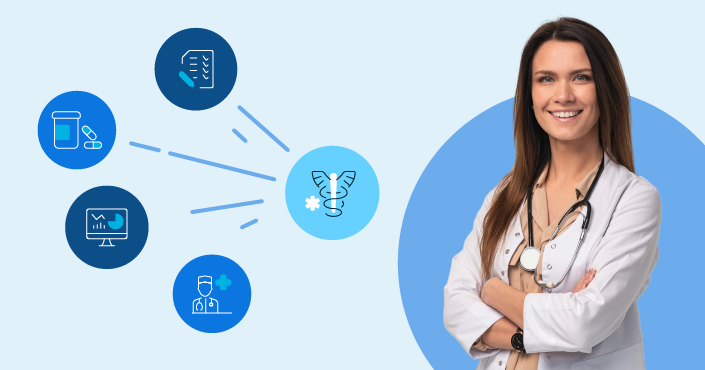






Innovations in Interoperability with HealthStream

This blog is from a recent interview with Kevin O'Hara, HealthStream's Senior Vice President, Platform Solutions, discussing how HealthStream is leading the way towards improved interoperability in healthcare.
O'Hara leads the effort to build the technology platform that supports HealthStream's products. This platform also supports HealthStream's partners and other organizations by enabling them to build products on top of that platform.
Interoperability Defined
Pawlus began by asking O'Hara to define interoperability and discuss its importance to healthcare. O'Hara explained that there are two ways in which to think about interoperability. The first is interoperability between systems. This allows different systems such as HealthStream's applications, hospitals, and third-party applications to talk with one another. The second aspect of interoperability is how those applications communicate with one another. O'Hara explained that communication is built on application programming interfaces (API). APIs establish the taxonomy that is essential to communication -systems talking to one another in a language that is understood by all of the programs as well as what they are talking about.
Interoperability at the Individual Level
O'Hara also described something that is critical in healthcare - interoperability at the individual level. A consistent means by which to identify providers is essential to credentialing and patient safety. "Getting to a unique identifier for everyone in all of our systems, and ultimately for everyone who works in healthcare is a key focus of ours," said O'Hara. This makes it possible to exchange data at the individual level across multiple systems and applications.
The current state of the art is not terribly advanced in terms of interoperability at the individual level. Currently, there is a national system to identify physicians and some advanced practice practitioners - the National Provider Identifier or NPI number. It is a helpful means of identifying individual practitioners, but it obviously does not extend to everyone who works in healthcare. There have long been efforts to create a similar system for nurses, but even that will still leave large numbers of people who work in allied health fields and ancillary services who would not be covered.
Interoperability - Supporting People Who Deliver Care
Recruitment and retention are, have been and will likely continue to be among the top issues facing healthcare executives. O'Hara shared that interoperability could take the friction out of these issues as it contributes to the understanding of who these individuals are - what is their experience, where have they worked, what is their competency, what are their credentials, and what training have they had. "Essentially, anything you need to know about a person before they can begin to work in healthcare, you should be able to find out from our platform," said O'Hara. It also reduces the number of times that employees will need to enter (and re-enter) their education and work histories as well as their credentials.
Another area in which HealthStream supports interoperability is in medical device training. In some cases, staff need to be trained on medical devices prior to being cleared to use those devices. HealthStream can automatically communicate with those devices, allowing them to be turned on for qualified users. Of course, that requires seamless and accurate communication about precisely who that individual is and what they are credentialed to do.
Interoperability - Creating Efficiency, Accuracy and Safety
Interoperability means that Human Resources professionals, Chief Nursing Officers and others can have confidence in a more efficient process. Rather than trying to manually aggregate information from a variety of different sources, that information is now available from a single source. It relieves both the employee and leaders from having to manually enter information from multiple sources on such things as licenses, certifications, work experience and education. Interoperability allows that information to be easily surfaced and reported for managers and senior leaders.
It also helps send a message to employees. It gives employers an opportunity to ensure that employees are getting what they need in terms of credentials and certifications and to help them build great professional portfolios. It can also surface any gaps and bring opportunities to employees wishing or needing to close those gaps.
HealthStream has ten applications that cover learning and development, credentialing and privileging, and scheduling. O'Hara pointed out that organizations can stack these applications, that are all working together, to ensure that an employee's learning history, competencies, certifications and licenses can be used to build the optimal schedule for patients and staff.
Interoperability - HealthStream's Developer Portal
HealthStream has recently introduced a developer portal that will create opportunities for developers of other applications and customer systems to easily see what is necessary to integrate with HealthStream's systems. "As long as a developer looks at HealthStream's documentation, they are going to be able to integrate their application with HealthStream's," said O'Hara.
O'Hara also shared that as part of the growing hStream platform, is the hStream ID, a unique identifier for individuals, The hStream ID acts as a passport for any individual working in healthcare as it is a unique identifier that can follow the individual across their entire career and across applications.
